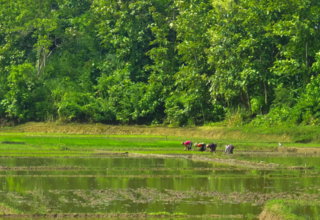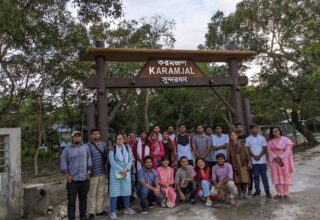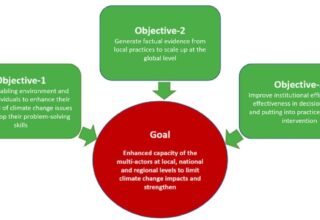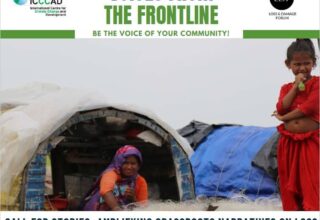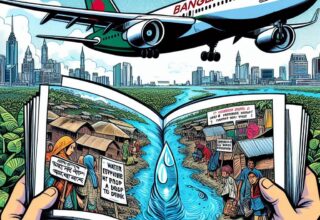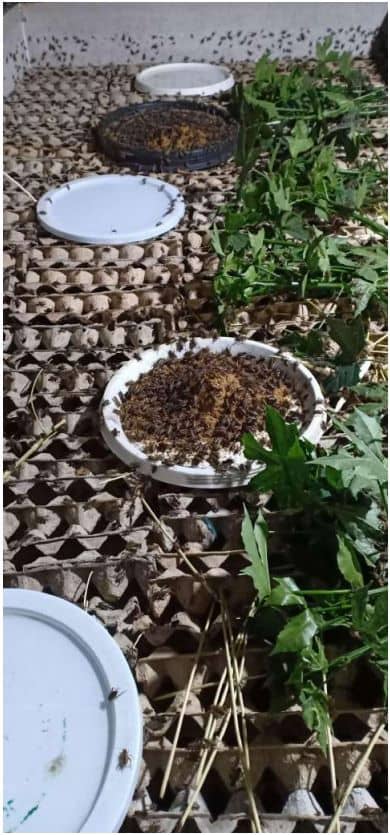
Cambodia, located in the Southeast Asia region, is one of the countries listed on the UN List of Least Developed Countries (LDC). Although it has witnessed economic growth over the past decade, it continues to face challenges. Marked by a comparatively low Gross Domestic Product (GDP) and significant rates of poverty and food security. Cambodia is particularly susceptible to the effects of climate change. The area experiences recurrent climate change-induced disasters, including annual floods, droughts, and elevated temperatures, attributable to its geographic positioning.
The backbone of Cambodia’s economy lies in rural smallholder farming, predominantly relying on rain-fed cultivation. This presents substantial challenges, especially during the dry season, posing difficulties for essential vegetable gardens. A large segment of the Cambodian population relies on agriculture for sustenance, making them particularly susceptible to the devastating effects of flooding. Consequently, small backyard plots often lie unused. Given the prevalence of natural disasters, achieving food security in the country can be quite challenging. Analysts predict that approximately seven million Cambodians will be at high risk of severe impacts from climate change by 2050 (Talberth & Reytar, 2014).
To address these challenges, the Livestock Development for Community Livelihood (LDC) project introduced cricket and Chaya farming as livelihood options. This initiative was supported by a grant from the UNDP-Adaptation Fund Climate Innovation Accelerator (AFCIA). The cricket farming model was designed to mitigate the impact of climate change by requiring less water, labor, and space. It not only created job opportunities and generated cash income but also offered a cost-effective, high-nutrition food source for the community. Additionally, the smart cricket pens, designed to float during floods, enabled farmers to continue their farming activities even during the rainy season. For instance, Mr. Chhay Phien, who had practiced cricket farming since 2019, faced difficulties during the monsoon season from June to October in the following years when his cricket pens were grounded. With the training and financial assistance of the project, he can now sustain cricket farming throughout the year without any concerns.
Both chaya cultivation and cricket farming showcase impressive resilience to climate challenges, requiring minimal water and space. Chaya plants can be effectively cultivated alongside the fences of backyard gardens/houses, contributing to green coverage and enhancing air quality in the village. Mrs. Pang Ouk, a beneficiary of the initiative from the Ou Rum Chek village in Doeum Doung Commune, Angkor Chey district, Kampot province, Cambodia, expressed her amazement: ‘I never imagined that my small fallow land could be so effectively utilized, generating at least $4 per square meter within just forty days.’
The maintenance of the smart cricket pens is cost-effective as they can be used for up to seven years without the need for part replacements. Each unit (size of 1.2m x 2.4m x 0.8m) can yield 15 kg of fresh crickets, 40 bowls of cricket eggs, and 30 kg of cricket frass. This translates to a gross total income of $62.6 per unit pen (a structure used for cricket farming) within a 40-days production cycle. For example, Mr Chhay Phien, who manages four pens, spends an average of 15 minutes per day on their upkeep. As a result, he can generate $250, a substantial return from his investment of $40 in 4 pens of cricket farming.
Various structures can serve as habitats for crickets. The primary goal of these enclosures is to create a secure environment that facilitates optimal growth by containing and isolating the crickets. The cricket farming pens can be constructed using a variety of locally available materials and styles. In the early stages of it, cylindrical concrete well tubes with an 80-cm diameter were commonly employed. However, recent trends have shifted towards rectangular pens.
While concrete blocks are commonly used for the sides, alternatives such as gypsum board sheets and plywood are also options, though they may be less durable. Additionally, crickets can be reared in custom-made plastic boxes or commercially available plastic basins.
To prevent crickets from escaping, a metallic non-slip surface is essential along the top edge of the pen. While adhesive tape was previously used for this purpose, contemporary recommendations for permanent concrete pens include using a strip of glazed tiles on the tops of the pen walls. Managing heat within the pen is also crucial, as overheating can lead to disease outbreaks and high mortality rates among crickets. Additionally, Concrete has the ability to absorb and radiate heat, necessitating shading from direct sunlight. Placing the pens under a roofed structure with ample air movement above the enclosure helps regulate temperature and create a more favorable environment for cricket rearing.
“The elderly and women are the most susceptible to facing limited access to financial resources and are the most impacted in this regard”
The elderly and women are the most susceptible to facing limited access to financial resources and are the most impacted in this regard. Women often rely on men for financial support and are primarily occupied with childcare and household responsibilities. On the other hand, elderly people like Mr. Chhay Phien, explained that due to his advanced age, finding job opportunities was impossible. And later he added with the support of the LDC project, he now can work from home, earning a regular income.”
Thanks to the grant, LDC has successfully trained 44 households, benefitting 214 individuals directly, and creating a positive ripple effect on 6,757 indirect beneficiaries. The production of 6,400 kilograms of cricket has not only contributed to the income of local farmers, with a monthly increase of $37.5, but it has also fostered economic empowerment within the community. Moreover, the grant has played a crucial role in establishing six women’s cooperatives that took the initiative to initiate chaya farming in their homestead gardens or on unused lands. Women played a more significant role in this endeavor, requiring just one hour of their daily time. The impact of this shift in livelihoods was substantial as women gained greater financial independence and even assumed leadership roles. Mrs Uy Oun, a participant in the LDC project, for instance, shared her journey, explaining that her traditional cake business could not always guarantee to generate enough income to meet her basic needs. However, now that she operates a cricket farming business with two pens, not only does she earn more but it also has a significantly less time commitment.
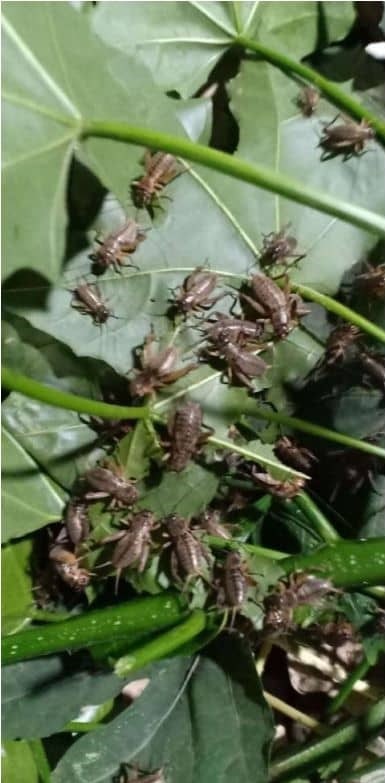
The initiative has already shown significant promise and made a notable impact. Phalla Miech, the Director of LDC, has expressed the organization’s intention to broaden participation by involving 100, as the existing engaged farmers are still striving to meet the escalating demand. Their strategy also involves increasing the number of cricket pens in each household from two to 10, thereby enhancing production capacity. Additionally, the organization also plans to establish connections with intermediaries to bolster the cricket supply chain. In the long term, they intend to collaborate with agrifood organizations to establish a sustainable market for cricket farming.
Farming these highly nutritious crickets as a viable tool to enhance solution climate resilience and as a stable source of income offers numerous opportunities but also comes with its inherent challenges. These challenges include securing capital for training and necessary farming materials, addressing post-harvesting processes, effective packaging, marketing strategies, ensuring a consistent supply aligned with demand, affordability of cricket eggs, and a lack of research for ongoing by-product development.
Crickets hold the potential to address food and nutrition insecurity while championing food sovereignty. Driven by strong demand at both the local and global levels, farmers recognize a significant potential for growth in the cricket farming industry. More people are turning to cricket powder as a nutritious addition to their beverages. The success of cricket farming in Cambodia is an example for other regions. Exemplifying the transformative impact that sustainable agricultural practices can have on communities, inspiring us to forge ahead on this promising path of this sustainable food source.
The article is written from the interview with Dr. Phalla Miech, Director of Livestock Development for Community Livelihood Organization (LDC), from Cambodia. Dr. Phalla also conducted the first Swedish PhD thesis on crickets as food and feed.
Authors: Rukhsar Sultana is working as a researcher and development practitioner at an NGO based in Dhaka.
This story has been co-created with the support of ICCCAD, UNDP and Livestock Development for Community Livelihood (LDC), in the framework of the UNDP managed – Adaptation Fund Climate Innovation Accelerator (AFCIA). The UNDP AFCIA programme counts with the financial contributions from the Adaptation Fund and the European Union and has awarded 44 micro and small grants to locally-led organizations across 33 countries worldwide, accelerating their innovative solutions to build resilience in the most vulnerable communities.
UNDP-AFCIA, is one of the funding windows anchored under the Adaptation Innovation Marketplace (AIM), a multi-stakeholder strategic platform that promotes scaled-up adaptation at the local level, launched by UNDP Administrator Achim Steiner at the Climate Adaptation Summit in January 2021.

